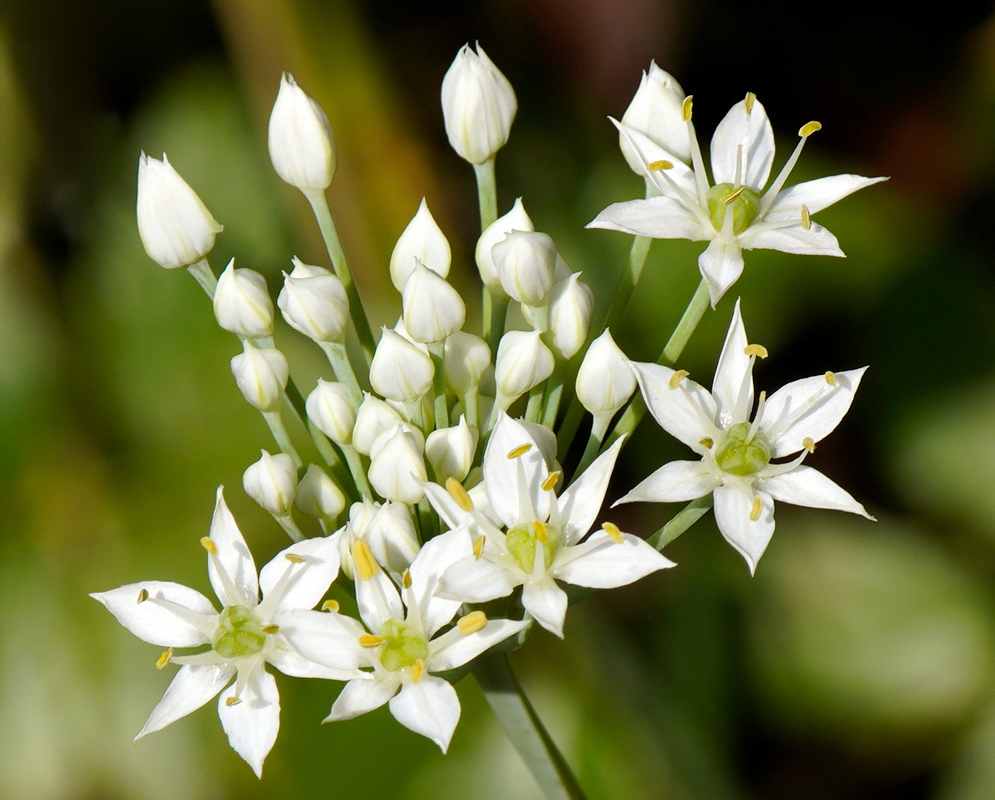This post has 11 Simple Fields-fields attached. Show fields.

Allium tuberosum originates from central and southeastern Asia, and has been introduced widely across temperate and subtropical areas. It grows as a perennial from an underground bulb and forms clumps of long, flat, grass-like leaves. The flowering stalk can reach up to 24 inches tall and bears a dense, flattened cluster of white flowers, each with six narrow tepals and prominent yellow stamens radiating from a green central ovary. It typically blooms in late summer or early fall, contrasting with most related species that flower earlier in the year.
The flowers are mildly aromatic and is cultivated for both ornamental and culinary purposes, particularly in Chinese and Korean cuisine where the leaves, flower buds, and stems are harvested for their mild garlic flavor. In the United States, it is commonly grown in herb gardens and valued for its late-season floral display and utility in cooked dishes. China, South Korea, and Japan are among the leading producers for commercial use, and the plant is often sold fresh or dried in local markets throughout East Asia. In some parts of the southeastern United States and Australia, it spreads readily and is classified as invasive in naturalized areas.

